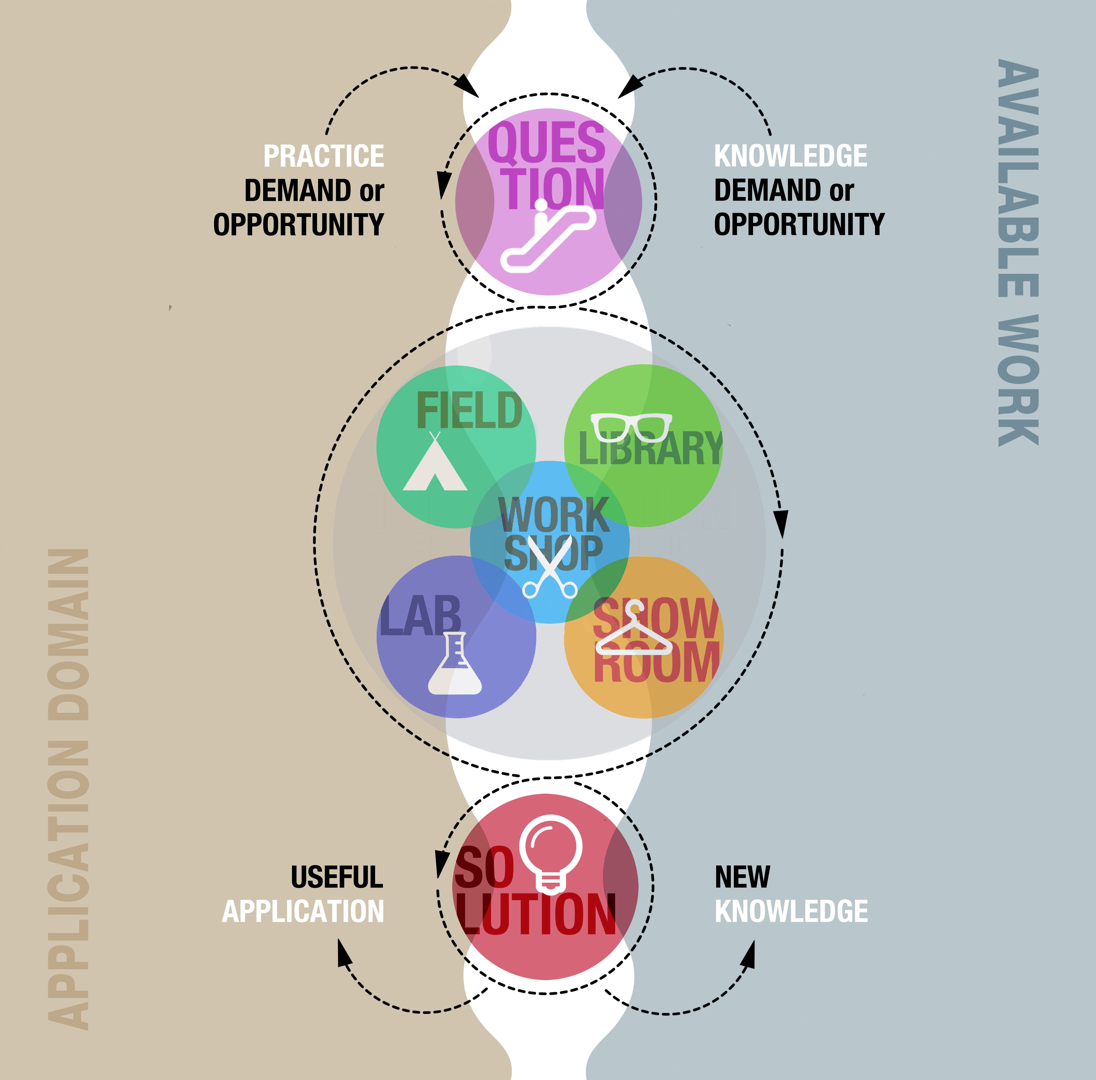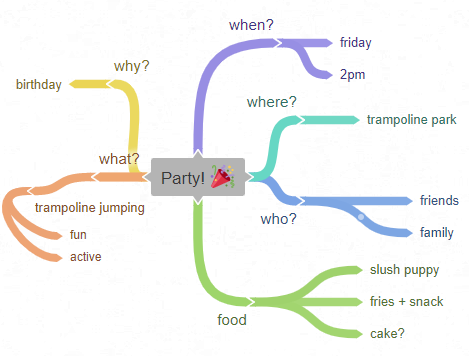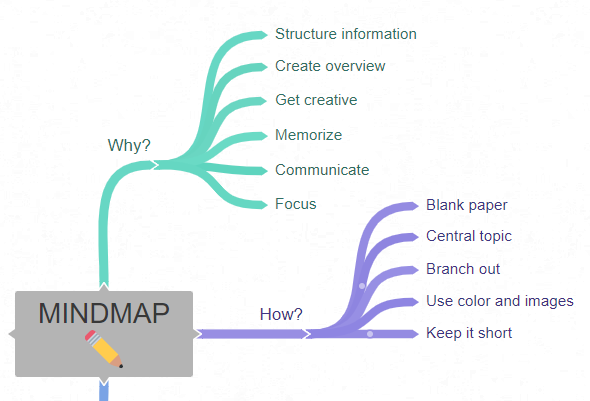Het arrangement 1.1.1 Mindmapping (EN) is gemaakt met Wikiwijs van Kennisnet. Wikiwijs is hét onderwijsplatform waar je leermiddelen zoekt, maakt en deelt.
- Auteur
- Laatst gewijzigd
- 2020-08-26 16:02:32
- Licentie
-
Dit lesmateriaal is gepubliceerd onder de Creative Commons Naamsvermelding 4.0 Internationale licentie. Dit houdt in dat je onder de voorwaarde van naamsvermelding vrij bent om:
- het werk te delen - te kopiëren, te verspreiden en door te geven via elk medium of bestandsformaat
- het werk te bewerken - te remixen, te veranderen en afgeleide werken te maken
- voor alle doeleinden, inclusief commerciële doeleinden.
Meer informatie over de CC Naamsvermelding 4.0 Internationale licentie.
Aanvullende informatie over dit lesmateriaal
Van dit lesmateriaal is de volgende aanvullende informatie beschikbaar:
- Toelichting
- Whether you want to come up with new ideas, determine what needs to be done for a new project, take notes in a meeting, or work through lesson materials for learning something new, mind mapping can help. A mind map is a way of visually organizing information, which helps to structure and understand the information, gain an overview, but also communicate with others. It makes you more productive, creative, and allows you to remember information better. In this building block we look at what a mind map is, how you can make it, and what you should pay attention to. This is a HBO-ICT building block for Research in Education.
- Leerniveau
- HBO - Bachelor;
- Eindgebruiker
- leerling/student
- Moeilijkheidsgraad
- gemiddeld
- Studiebelasting
- 2 uur 0 minuten
- Trefwoorden
- brainstorm, building block, concept map, hbo ict oio, investigative attitude, mindmap, onderzoek, onderzoekende houding, workshop
Bronnen
| Bron | Type |
|---|---|
|
Explanation of how to mind map with Tony Buzan, the inventor https://www.youtube.com/watch?v=u5Y4pIsXTV0 |
Video |
|
Interview with game developer Martijn Plass about game development https://youtu.be/W6FZqQKZilU |
Video |




